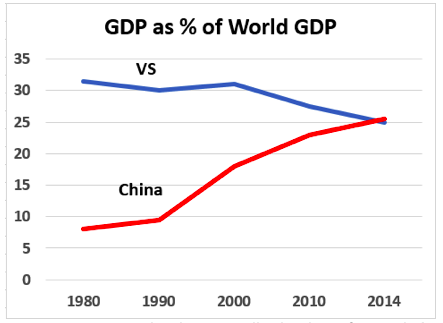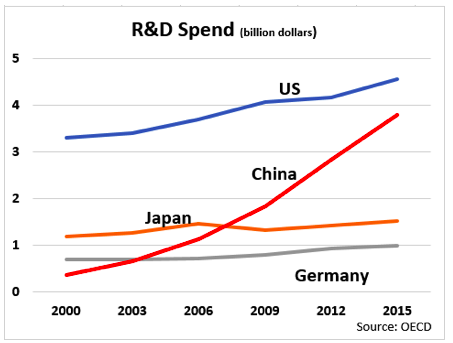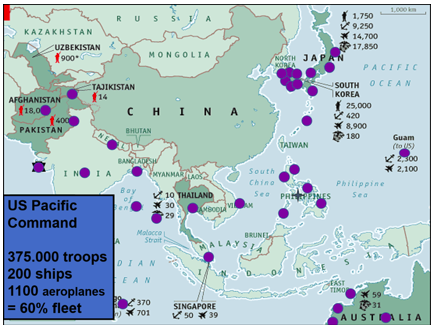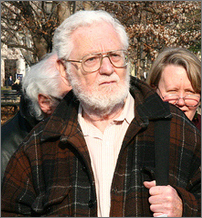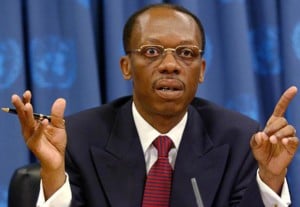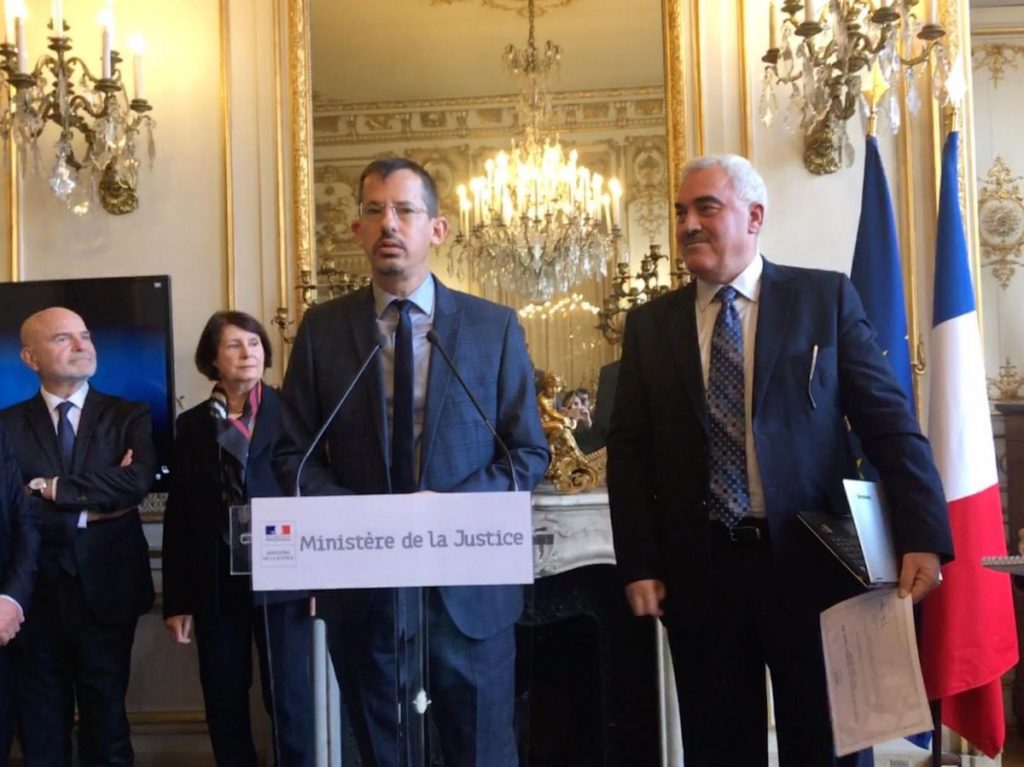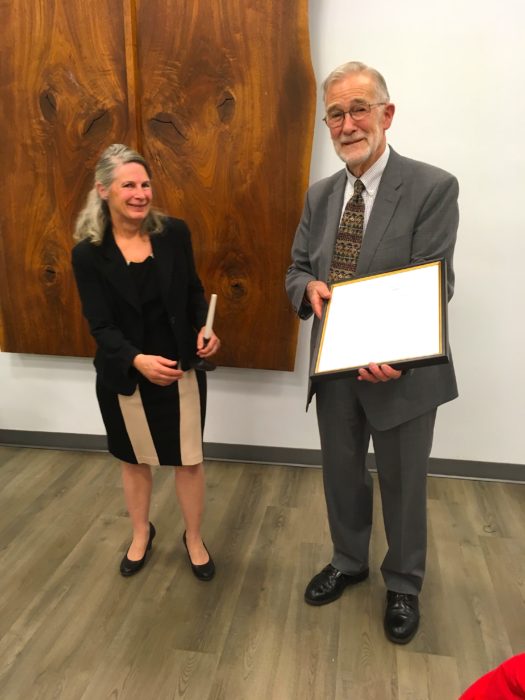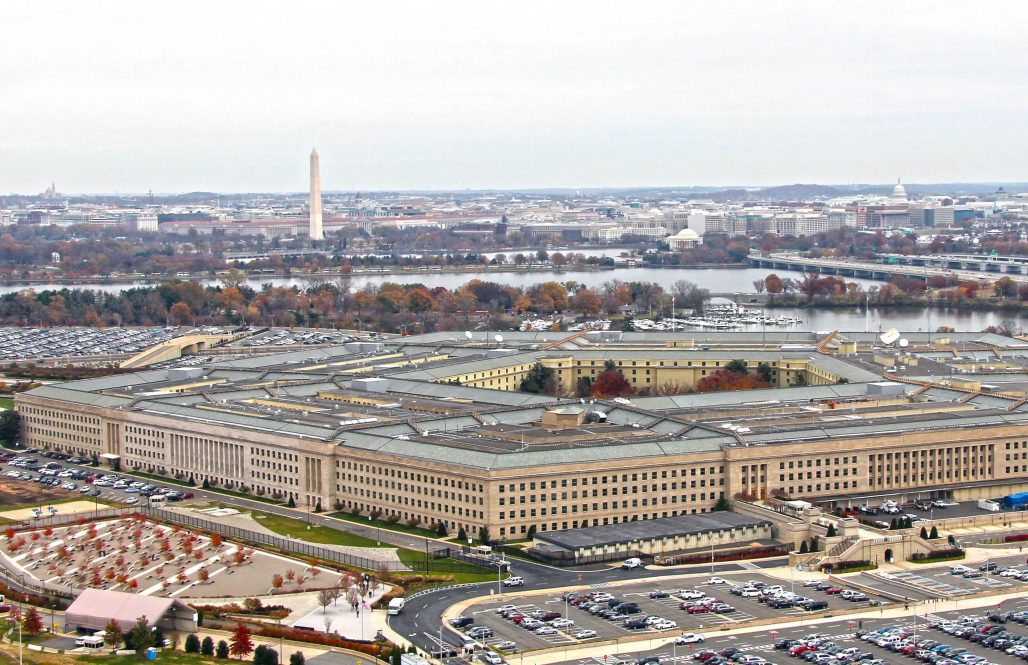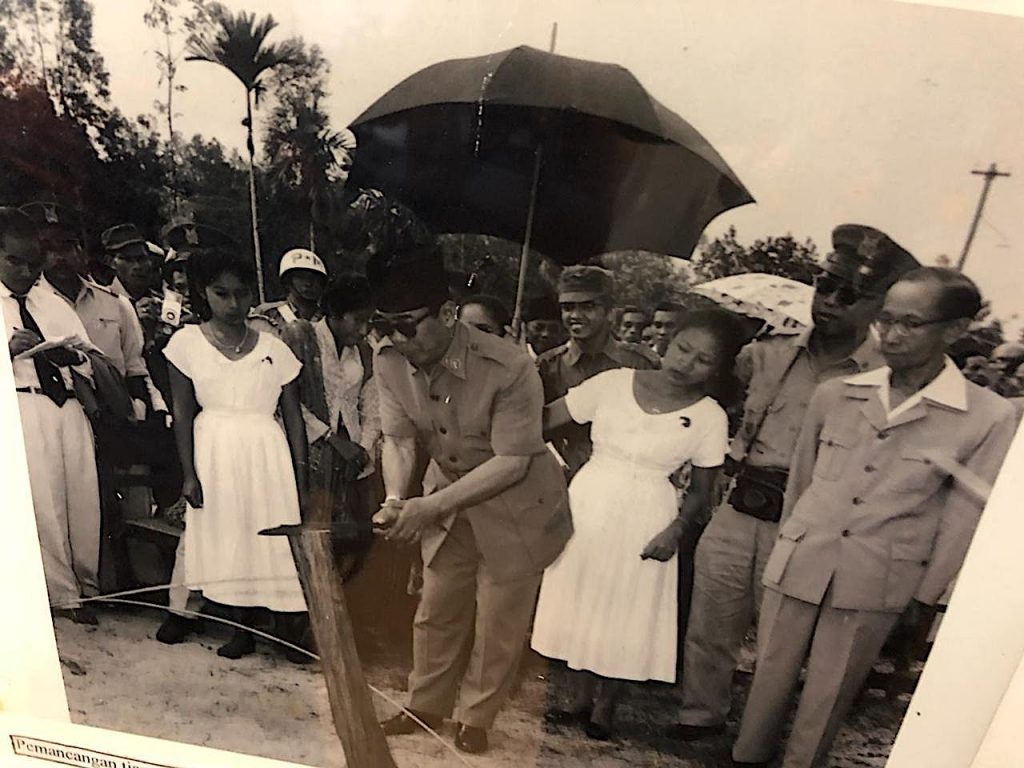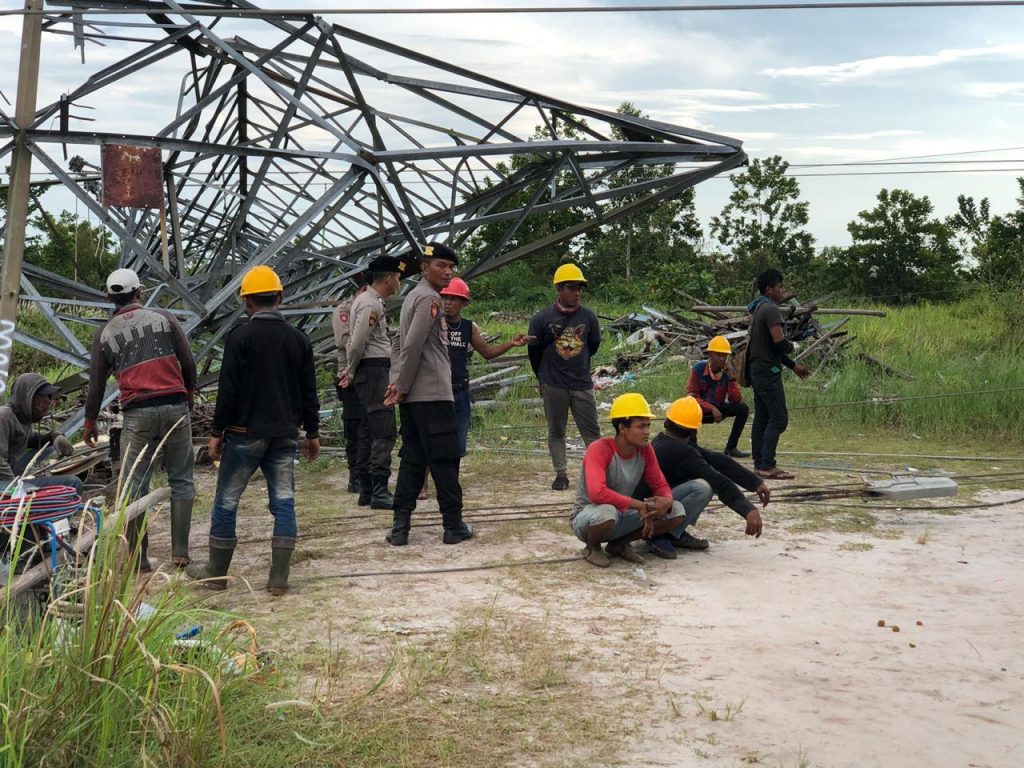This article was first published by GR in December 2011
Seventy-seven years ago in December 1941. The Red Army’s Counteroffensive.
Historian Dr. Jacques Pauwels analyses the evolution of World War II, focusing on the “Battle of Moscow” in December 1941 which preceded the defeat of German troops in Stalingrad in February 1943. According to Dr. Pauwels, the turning point was not Stalingrad but “the Battle of Moscow” and the Soviet counter-offensive launched in December 1941:
When the Red Army launched its devastating counteroffensive on December 5, Hitler himself realized that he would lose the war. But of course he was not prepared to let the German public know that. The nasty tidings from the front near Moscow were presented to the public as a temporary setback, blamed on the supposedly unexpectedly early arrival of winter and/or on the incompetence or cowardice of certain commanders.
It was only a good year later, after the catastrophic defeat in the Battle of Stalingrad during the winter of 1942-1943, that the German public, and the entire world, would realize that Germany was doomed; this is why even today many historians believe that the tide turned in Stalingrad .
Even so, it proved impossible to keep the catastrophic implications of the debacle in front of Moscow a total secret. For example, on December 19, 1941, the German Consul in Basel reported to his superiors in Berlin that the (openly pro-Nazi) head of a mission of the Swiss Red Cross, sent to the front in the Soviet Union to assist only the wounded on the German side, which of course contravened Red Cross rules, had returned to Switzerland with the news, most surprising to the Consul, that “he no longer believed that Germany could win the war.”[30]
Michel Chossudovsky, Global Research, December 12, 2018
The defeat of German troops at Stalingrad was on February 4, 1943
***
The Battle of Moscow, December 1941: Turning Point of World War II
The Victory of the Red Army in front of Moscow was a Major Break…
by Jacques Pauwels
Global Research
6 December 2011
World War II started, at least as far as the “European Theatre” was concerned, with the German army steamrolling over Poland in September, 1939. About six months later, even more spectacular victories followed, this time over the Benelux Countries and France. By the summer of 1940, Germany looked invincible and predestined to rule the European continent indefinitely. (Great Britain admittedly refused to throw in the towel, but could not hope to win the war on its own, and had to fear that Hitler would soon turn his attention to Gibraltar, Egypt, and/or other jewels in the crown of the British Empire.) Five years later, Germany experienced the pain and humiliation of total defeat. On April 20, 1945, Hitler committed suicide in Berlin as the Red Army bulldozed its way into the city, reduced to a heap of smoking ruins, and on May 8/9 German surrendered unconditionally.
Clearly, then, sometime between late 1940 and 1944 the tide had turned rather dramatically. But when, and where? In Normandy in 1944, according to some; at Stalingrad, during the winter of 1942-43, according to others. In reality, the tide turned in December 1941 in the Soviet Union, more specifically, in the barren plain just west of Moscow. As a German historian, an expert on the war against the Soviet Union, has put it: “That victory of the Red Army [in front of Moscow] was unquestionably the major break [Zäsur] of the entire world war.”[1]
That the Soviet Union was the scene of the battle that changed the course of World War II, should come as no surprise. War against the Soviet Union was the war Hitler had wanted from the beginning, as he had made very clear on the pages of Mein Kampf, written in the mid-1920s. (But an Ostkrieg, a war in the east, i.e. against the Soviets, was also the object of desire of the German generals, of Germany’s leading industrialists, and of other “pillars” of Germany’s establishment.) In fact, as a German historian has just recently demonstrated,[2] it was a war against the Soviet Union, and not against Poland, France, or Britain, that Hitler had wanted to unleash in 1939. On August 11 of that year, Hitler explained to Carl J. Burckhardt, an official of the League of Nations, that “everything he undertook was directed against Russia,” and that “if the West [i.e. the French and the British] is too stupid and too blind to comprehend this, he would be forced to reach an understanding with the Russians, turn and defeat the West, and then turn back with all his strength to strike a blow against the Soviet Union.”[3] This is in fact what happened. The West did turn out to be “too stupid and blind”, as Hitler saw it, to give him “a free hand” in the east, so he did make a deal with Moscow – the infamous “Hitler-Stalin Pact” – and then unleashed war against Poland, France and Britain. But his objective remained the same: to attack and destroy the Soviet Union as soon as possible.
Hitler and the German generals were convinced they had learned an important lesson from World War I. Devoid of the raw materials needed to win a modern war, such as oil and rubber, Germany could not win a long, drawn-out war. In order to win the next war, Germany would have to win it fast, very fast. This is how the Blitzkrieg-concept was born, that is, the idea of warfare (Krieg) fast as “lightning” (Blitz). Blitzkrieg meant motorized war, so in preparation for such a war Germany during the thirties cranked out massive numbers of tanks and planes as well as trucks to transport troops. In addition, gargantuan amounts of oil and rubber were imported and stockpiled. Much of this oil was purchased from US corporations, some of which also kindly made available the “recipe” for producing synthetic fuel from coal.[4] In 1939 and 1940, this equipment permitted the German Wehrmacht and Luftwaffe to overwhelm the Polish, Dutch, Belgian, and French defenses with thousands of planes and tanks in a matter of weeks; Blitzkriege, “lightning-fast wars,” were invariably followed by Blitzsiege, “lightning-fast victories.”

German soldiers tend to a wounded comrade near Moscow, November–December 1941 (Source: Wikimedia Commons)
These victories were spectacular enough, but they did not provide Germany with much loot in the form of vitally important oil and rubber. Instead, “lightning warfare” actually depleted the stockpiles built up before the war. Fortunately for Hitler, in 1940 and 1941 Germany was able to continue importing oil from the still neutral United States – not directly, but via other neutral (and friendly) countries such as Franco’s Spain. Moreover, under the terms of the Hitler-Stalin Pact the Soviet Union herself also supplied Germany rather generously with oil! However, it was most troubling for Hitler that, in return, Germany had to supply the Soviet Union with high-quality industrial products and state-of-the-art military technology, which was used by the Soviets to modernize their army and improve their weaponry.[5]
It is understandable that Hitler already resurrected his earlier plan for war against the Soviet Union soon after the defeat of France, namely, in the summer of 1940. A formal order to prepare plans for such an attack, to be code-named Operation Barbarossa (Unternehmen Barbarossa) was given a few months later, on December 18, 1940.[6] Already in 1939 Hitler had been most eager to attack the Soviet Union, and he had turned against the West only, as a German historian has put it, “in order to enjoy security in the rear (Rückenfreiheit) when he would finally be ready to settle accounts with the Soviet Union.” The same historian concludes that by 1940 nothing had changed as far as Hitler was concerned: “The true enemy was the one in the east.”[7] Hitler simply did not want to wait much longer before realizing the great ambition of his life, that is, before destroying the country he had defined as his archenemy in Mein Kampf. Moreover, he knew that the Soviets were frantically preparing their defenses for a German attack which, as they knew only too well, would come sooner or later. Since the Soviet Union was getting stronger by the day, time was obviously not on Hitler’s side. How much longer could he wait before the “window of opportunity” would close?
Furthermore, waging a Blitzkrieg against the Soviet Union promised to provide Germany with the virtually limitless resources of that huge country, including Ukrainian wheat to provide Germany’s population with plenty of food, also at wartime; minerals such as coal, from which synthetic rubber and oil could be produced; and – last but certainly not least! – the rich oil fields of Baku and Grozny, where the gas-guzzling Panzers and Stukas would be able to fill their tanks to the brim at any time. Steeled with these assets, it would then be a simple matter for Hitler to settle accounts with Britain, starting, for example, with the capture of Gibraltar. Germany would finally be a genuine world power, invulnerable within a European “fortress” stretching from the Atlantic to the Urals, possessed of limitless resources, and therefore capable to win even long, drawn-out wars against any antagonist – including the US! – in one of the future “wars of the continents” conjured up in Hitler’s feverish imagination.

Red Army ski troops in Moscow. Still from documentary Moscow Strikes Back, 1942 (Source: Wikimedia Commons)
Hitler and his generals were confident that the Blitzkrieg they prepared to unleash against the Soviet Union would be as successful as their earlier “lightning wars” against Poland and France had been. They considered the Soviet Union as a “giant with feet of clay”, whose army, presumably decapitated by Stalin’s purges of the late 1930s, was “not more than a joke,” as Hitler himself put it on one occasion.[8] In order to fight, and of course win, the decisive battles, they allowed for a campaign of four to six weeks, possibly to be followed by some mopping-up operations, during which the remnants of the Soviet host would “be chased across the country like a bunch of beaten Cossacks.”[9] In any event, Hitler felt supremely confident, and on the eve of the attack, he “fancied himself to be on the verge of the greatest triumph of his life.”[10]
(In Washington and London, the military experts likewise believed that the Soviet Union would not be able to put up significant resistance to the Nazi juggernaut, whose military exploits of 1939-40 had earned it a reputation of invincibility. The British secret services were convinced that the Soviet Union would be “liquidated within eight to ten weeks,” and Field Marshal Sir John Dill, Chief of the Imperial General Staff, averred that the Wehrmacht would slice through the Red Army “like a warm knife through butter,” that the Red Army would be rounded up “like cattle.” According to expert opinion in Washington, Hitler would “crush Russia [sic] like an egg.”)[11]
The German attack started on June 22, 1941, in the early hours of the morning. Three million German soldiers and almost 700,000 allies of Nazi Germany crossed the border, and their equipment consisted of 600,000 motor vehicles, 3,648 tanks, more than 2.700 planes, and just over 7,000 pieces of artillery.[12] At first, everything went according to the plan. Huge holes were punched in the Soviet defences, impressive territorial gains were made rapidly, and hundreds of thousands of Red Army soldiers were killed, wounded, or taken prisoner in a number of spectacular “encirclement battles” (Kesselschlachten). After one such battle, fought in the vicinity of Smolensk towards the end of July, the road to Moscow seemed to lay open.
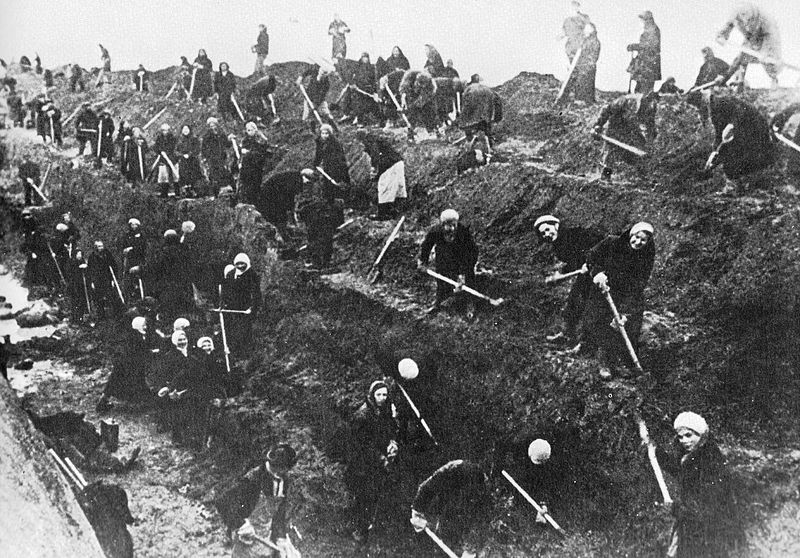
Armed with heavy shovels, a hastily assembled work force of Moscow women and elderly men gouge a huge tank trap out of the earth to halt German Panzers advancing on the Russian capital. In the feverish effort to save the city, more than 100,000 citizens labored from mid-October until late November digging ditches and building other obstructions. When completed, the ditches extended more than 100 miles. Source: Scanned from “Russia Besieged” (ISBN 705405273), page 165 Image originally from the United States Information Agency
However, all too soon it became evident that the Blitzkrieg in the east would not be the cakewalk that had been expected. Facing the most powerful military machine on earth, the Red Army predictably took a major beating but, as Propaganda Minister Joseph Goebbels confided to his diary as early as July 2, also put up a tough resistance and hit back pretty hard on more than one occasion. General Franz Halder, in many ways the “godfather” of Operation Barbarossa’s plan of attack, acknowledged that Soviet resistance was much tougher than anything the Germans had faced in Western Europe. Wehrmacht reports cited “hard,” “tough,” even “wild” resistance, causing heavy losses in men and equipment on the German side.[13] More often than expected, Soviet forces managed to launch counter-attacks that slowed down the German advance. Some Soviet units went into hiding in the vast Pripet Marshes and elsewhere, organized deadly partisan warfare, and threatened the long and vulnerable German lines of communication.[14] It also turned out that the Red Army was much better equipped than expected. German generals were “amazed,” writes a German historian, by the quality of Soviet weapons such as the Katyusha rocket launcher (a.k.a. “Stalin Organ”) and the T-34 tank. Hitler was furious that his secret services had not been aware of the existence of some of this weaponry.[15]
The greatest cause of concern, as far as the Germans were concerned, was the fact that the bulk of the Red Army managed to withdraw in relatively good order and eluded destruction in a major Kesselschlacht, the kind of repeat of Cannae or Sedan that Hitler and his generals had dreamed of. The Soviets appeared to have carefully observed and analyzed the German Blitzkrieg successes of 1939 and 1940 and to have learned useful lessons. They must have noticed that in May 1940 the French had massed their forces right at the border as well as in Belgium, thus making it possible for the German war machine to encircle them in a major Kesselschlacht. (British troops were also caught in this encirclement, but managed to escape via Dunkirk.) The Soviets did leave some troops at the border, of course, and these troops predictably suffered the Soviet Union’s major losses during the opening stages of Barbarossa. But – contrary to what is claimed by historians such as Richard Overy[16] – the bulk of the Red Army was held back in the rear, avoiding entrapment. It was this “defence in depth” that frustrated the German ambition to destroy the Red Army in its entirety. As Marshal Zhukov was to write in his memoirs, “the Soviet Union would have been smashed if we had organized all our forces at the border.”[17]
By the middle of July, as Hitler’s war in the east started to lose its Blitz-qualities, some German leaders started to voice great concern. Admiral Wilhelm Canaris, head of the Wehrmacht’s secret service, the Abwehr, for example, confided on July 17 to a colleague on the front, General von Bock, that he saw “nothing but black.” On the home front, many German civilians also started to feel that the war in the east was not going well. In Dresden, Victor Klemperer wrote in his diary on July 13: “We suffer immense losses, we have underestimated the Russians…”[18] Around the same time Hitler himself abandoned his belief in a quick and easy victory and scaled down his expectations; he now expressed the hope that his troops might reach the Volga by October and capture the oil fields of the Caucasus a month or so later.[19] By the end of August, at a time when Barbarossa should have been winding down, a memorandum of the Wehrmacht’s High Command (Oberkommando der Wehrmacht, OKW) acknowledged that it might no longer be possible to win the war in 1941.[20]
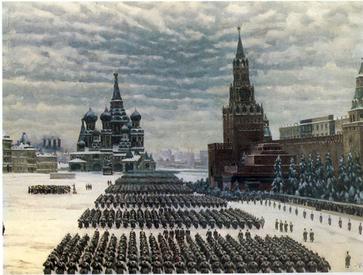
A 7 November 1941 parade by Soviet troops on Red Square depicted in this 1949 painting by Konstantin Yuon vividly demonstrates the symbolic significance of the event (Source: Wikimedia Commons)
A major problem was the fact that, when Barbarossa started on June 22, the available supplies of fuel, tires, spare parts etc., were only good enough for about two months. This had been deemed sufficient, because it was expected that within two months the Soviet Union would be on its knees and its unlimited resources – industrial products as well as raw materials – would therefore be available to the Germans.[21] However, by late August the German spearheads were nowhere near those distant regions of the Soviet Union where oil, that most precious of all martial commodities, was to be had. If the tanks managed to keep on rolling, though increasingly slowly, into the seemingly endless Russian and Ukrainian expanses, it was to a large extent by means of fuel and rubber imported, via Spain and occupied France, from the US. The American share of Germany’s imports of vitally important oil for engine lubrication (Motorenöl), for example, increased rapidly during the summer of 1941, namely, from 44 per cent in July to no less than 94 per cent in September.[22]
The flames of optimism flared up again in September, when German troops captured Kiev, bagging 650,000 prisoners, and, further north, made progress in the direction of Moscow. Hitler believed, or at least pretended to believe, that the end was now near for the Soviets. In a public speech in the Berlin Sportpalast on October 3, he declared that the eastern war was virtually over. And the Wehrmacht was ordered to deliver the coup de grace by launching Operation Typhoon (Unternehmen Taifun), an offensive aimed at taking Moscow. However, the odds for success looked increasingly slim, as the Soviets were busily bringing in reserve units from the Far East. (They had been informed by their master spy in Tokyo, Richard Sorge, that the Japanese, whose army was stationed in northern China, were no longer considering to attack the Soviets’ vulnerable borders in the Vladivostok area.) To make things worse, the Germans no longer enjoyed superiority in the air, particularly over Moscow. Also, insufficient supplies of ammunition and food could be brought up from the rear to the front, since the long supply lines were severely hampered by partisan activity.[23] Finally, it was getting chilly in the Soviet Union, though no colder than usual at that time of the year. But the German high command, confident that their eastern Blitzkrieg would be over by the end of the summer, had failed to supply the troops with the equipment necessary to fight in the rain, mud, snow, and freezing temperatures of a Russian fall and winter.
Taking Moscow loomed as an extremely important objective in the minds of Hitler and his generals. It was believed, though wrongly, that the fall of Moscow would “decapitate” the Soviet Union and thus bring about its collapse. It also seemed important to avoid a repeat of the scenario of the summer of 1914, when the seemingly unstoppable German advance had been halted in extremis on the eastern outskirts of Paris, during the Battle of the Marne. This disaster -from the German perspective – had robbed Germany of nearly certain victory in the opening stages of the “Great War” and had forced it into a long, drawn-out struggle that, lacking sufficient resources and blockaded by the British Navy, it was doomed to lose. This time, in a new Great War, fought against a new archenemy, the Soviet Union, there was to be no “Miracle of the Marne,” that is, no defeat just outside the capital, and Germany would therefore not again have to fight, resourceless and blockaded, a long, drawn out conflict it would be doomed to lose. Unlike Paris, Moscow would fall, history would not repeat itself, and Germany would end up being victorious.[24] Or so they hoped in Hitler’s headquarters.
The Wehrmacht continued to advance, albeit very slowly, and by mid-November some units found themselves at only 30 kilometers from the capital. But the troops were now totally exhausted, and running out of supplies. Their commanders knew that it was simply impossible to take Moscow, tantalizingly close as the city may have been, and that even doing so would not bring them victory. On December 3, a number of units abandoned the offensive on their own initiative. Within days, however, the entire German army in front of Moscow was simply forced on the defensive. Indeed, on December 5, at 3 in the morning, in cold and snowy conditions, the Red Army suddenly launched a major, well-prepared counter-attack. The Wehrmacht’s lines were pierced in many places, and the Germans were thrown back between 100 and 280 km with heavy losses of men and equipment. It was only with great difficulty that a catastrophic encirclement (Einkesselung) could be avoided. On December 8, Hitler ordered his army to abandon the offensive and to move into defensive positions. He blamed this setback on the supposedly unexpectedly early arrival of winter, refused to pull back further to the rear, as some of his generals suggested, and proposed to attack again in the spring.[25]
Thus ended Hitler’s Blitzkrieg against the Soviet Union, the war that, had it been victorious, would have realized the great ambition of his life, the destruction of the Soviet Union. More importantly, at least from our present perspective, such a victory would also have provided Nazi Germany with sufficient oil and other resources to make it a virtually invulnerable world power. As such, Nazi Germany would very likely have been capable of finishing off stubborn Great Britain, even if the US would have rushed to help its Anglo-Saxon cousin, which, incidentally, was not yet in the cards in early December of 1941. A Blitzsieg, that is, a rapid victory against the Soviet Union, then, was supposed to have made a German defeat impossible, and would in all likelihood have done so. (It is probably fair to say that if Nazi Germany would have defeated the Soviet Union in 1941, Germany would today still be the hegemon of Europe, and possibly of the Middle East and North Africa as well.) However, defeat in the Battle of Moscow in December 1941 meant that Hitler’s Blitzkrieg did not produce the hoped-for Blitzsieg. In the new “Battle of the Marne” just to the west of Moscow, Nazi Germany suffered the defeat that made victory impossible, not only victory against the Soviet Union itself, but also victory against Great Britain, victory in the war in general.
Bearing in mind the lessons of World War I, Hitler and his generals had known from the start that, in order to win the new “Great War” they had unleashed, Germany had to win fast, lightning-fast. But on December 5, 1941, it became evident to everyone present in Hitler’s headquarters that a Blitzsieg against the Soviet Union would not be forthcoming, so that Germany was doomed to lose the war, if not sooner, then later. According to General Alfred Jodl, Chief of the Operations Staff of the OKW, Hitler then realized that he could no longer win the war.[26] And so it can be argued that the tide of World War II turned on December 5, 1941. However, as real tides do not turn suddenly, but gradually and imperceptibly, the tide of the war also turned not on one single day, but over a period of days, weeks, even months, namely in the period of approximately three months that elapsed between the late summer of 1941 and early December of that same year.
The tide of the war in the east turned gradually, but it did not do so imperceptibly. Already in August 1941, as the German successes failed to bring about a Soviet capitulation and the Wehrmacht’s advance slowed down considerably, astute observers started to doubt that a German victory, not only in the Soviet Union but in the war in general, still belonged to the realm of possibilities. The well-informed Vatican, for example, initially very enthusiastic about Hitler’s “crusade” against the Soviet homeland of “godless” Bolshevism and confident that the Soviets would collapse immediately, started to express grave concerns about the situation in the east in late summer 1941; by mid-October, it was to come to the conclusion that Germany would lose the war.[27] Likewise in mid-October, the Swiss secret services reported that “the Germans can no longer win the war”; that conclusion was based on information gathered in Sweden from statements by visiting German officers.[28] By late November, a defeatism of sorts had started to infect the higher ranks of the Wehrmacht and of the Nazi Party. Even as they were urging their troops forward towards Moscow, some generals opined that it would be preferable to make peace overtures and wind down the war without achieving the great victory that had seemed so certain at the start of Operation Barbarossa. And shortly before the end of November, Armament Minister Fritz Todt asked Hitler to find a diplomatic way out of the war, since purely militarily as well as industrially it was as good as lost.[29]
When the Red Army launched its devastating counteroffensive on December 5, Hitler himself realized that he would lose the war. But of course he was not prepared to let the German public know that. The nasty tidings from the front near Moscow were presented to the public as a temporary setback, blamed on the supposedly unexpectedly early arrival of winter and/or on the incompetence or cowardice of certain commanders. (It was only a good year later, after the catastrophic defeat in the Battle of Stalingrad during the winter of 1942-1943, that the German public, and the entire world, would realize that Germany was doomed; this is why even today many historians believe that the tide turned in Stalingrad .) Even so, it proved impossible to keep the catastrophic implications of the debacle in front of Moscow a total secret. For example, on December 19, 1941, the German Consul in Basel reported to his superiors in Berlin that the (openly pro-Nazi) head of a mission of the Swiss Red Cross, sent to the front in the Soviet Union to assist only the wounded on the German side, which of course contravened Red Cross rules, had returned to Switzerland with the news, most surprising to the Consul, that “he no longer believed that Germany could win the war.”[30]
December 7. 1941. In his headquarters deep in the forests of East Prussia, Hitler had not yet fully digested the ominous news of the Soviet counter-offensive in front of Moscow, when he learned that, on the other side of the world, the Japanese had attacked the Americans at Pearl Harbour. This caused the US to declare war on Japan, but not on Germany, which had nothing to do with the attack and had not even been aware of the Japanese plans. Hitler had no obligation whatsoever to rush to the aid of his Japanese friends, as is claimed by many American historians, but on December 11, 1941 – four days after Pearl Harbor – he declared war on the US. This seemingly irrational decision must be understood in light of the German predicament in the Soviet Union. Hitler almost certainly speculated that this entirely gratuitous gesture of solidarity would induce his Eastern ally to reciprocate with a declaration of war on the enemy of Germany, the Soviet Union, and this would have forced the Soviets into the extremely perilous predicament of a two-front war. Hitler appears to have believed that he could exorcize the spectre of defeat in the Soviet Union, and in the war in general, by summoning a sort of Japanese deus ex machina to the Soviet Union’s vulnerable Siberian frontier. According to the German historian Hans W. Gatzke, the Führer was convinced that “if Germany failed to join Japan [in the war against the United States], it would…end all hope for Japanese help against the Soviet Union.” But Japan did not take Hitler’s bait. Tokyo, too, despised the Soviet state, but the land of the rising sun, now at war against the US, could afford the luxury of a two-front war as little as the Soviets, and preferred to put all of its money on a “southern” strategy, hoping to win the big prize of Southeast Asia – including oil-rich Indonesia! -, rather than embark on a venture in the inhospitable reaches of Siberia. Only at the very end of the war, after the surrender of Nazi Germany, would it come to hostilities between the Soviet Union and Japan. [31]
And so, because of Hitler’s own fault, the camp of Germany’s enemies now included not only Great Britain and the Soviet Union, but also the mighty USA, whose troops could be expected to appear on Germany’s shores, or at least on the shores of German-occupied Europe, in the foreseeable future. The Americans would indeed land troops in France, but only in 1944, and this unquestionably important event is still often presented as the turning point of World War II. However, one should ask if the Americans would ever have landed in Normandy or, for that matter, ever have declared war on Nazi Germany, if Hitler had not declared war on them on December 11, 1941; and one should ask if Hitler would ever have made the desperate, even suicidal, decision to declare war on the US if he had not found himself in a hopeless situation in the Soviet Union. The involvement of the US in the war against Germany, then, which for many reasons was not “in the cards” before December 1941, was also a consequence of the German setback in front of Moscow. Obviously, this constitutes yet another fact that may be cited in support of the claim that “the tide turned” in the Soviet Union in the fall and early winter of 1941.
Nazi Germany was doomed, but the war was still to be long one. Hitler ignored the advice of his generals, who strongly recommend trying to find a diplomatic way out of the war, and decided to battle on in the slim hope of somehow pulling victory out of a hat. The Russian counter-offensive would run out of steam, the Wehrmacht would survive the winter of 1941-1942, and in the spring of 1942 Hitler would scrape together all available forces for an offensive – code-named “Operation Blue” (Unternehmen Blau) – in the direction of the oil fields of the Caucasus – via Stalingrad. Hitler himself acknowledged that, “if he did not get the oil of Maikop and Grozny, then he would have to end this war.”[32] However, the element of surprise had been lost, and the Soviets proved to dispose of huge masses of men, oil, and other resources, as well as excellent equipment, much of it produced in factories that had been established behind the Urals between 1939 and 1941. The Wehrmacht, on the other hand, could not compensate for the huge losses it had suffered in 1941. Between June 22, 1941, and January 31, 1942, the Germans had lost 6,000 airplanes and more than 3,200 tanks and similar vehicles; and no less than 918,000 men had been killed, wounded, or gone missing in action, amounting to 28,7 percent of the average strength of the army, namely, 3,2 million men.[33] (In the Soviet Union, Germany would lose no less than 10 million of its total 13.5 million men killed, wounded, or taken prisoner during the entire war; and the Red Army would end up claiming credit for 90 per cent of all Germans killed in the Second World War.)[34] The forces available for a push towards the oil fields of the Caucasus were therefore extremely limited. Under those circumstances, it is quite remarkable that in 1942 the Germans managed to make it as far as they did. But when their offensive inevitably petered out, namely in September of that year, their weakly held lines were stretched along many hundreds of kilometers, presenting a perfect target for a Soviet attack. When that attack came, it caused an entire German army to be bottled up, and ultimately to be destroyed, in Stalingrad. It was after this great victory of the Red Army that the ineluctability of German defeat in World War II would be obvious for all to see. However, the seemingly minor and relatively unheralded German defeat in front of Moscow in late 1941 had been the precondition for the admittedly more spectacular and more “visible” German defeat at Stalingrad.

Medal “For the Defence of Moscow”: 1,028,600 were awarded from 1 May 1944.
There are even more reasons to proclaim December 1941 as the turning point of the war. The Soviet counter-offensive destroyed the reputation of invincibility in which the Wehrmacht had basked ever since its success against Poland in 1939, thus boosting the morale of Germany’s enemies everywhere. The Battle of Moscow also ensured that the bulk of Germany’s armed forces would be tied to an eastern front of approximately 4,000 km for an indefinite period of time, which all but eliminated the possibility of German operations against Gibraltar, for example, and thus provided tremendous relief to the British. Conversely, the failure of the Blitzkrieg demoralized the Fins and other German allies. And so forth…
It was in front of Moscow, in December 1941, that the tide turned, because it was there that the Blitzkrieg failed and that Nazi Germany was consequently forced to fight, without sufficient resources, the kind of long, drawn-out war that Hitler and his generals knew they could not possibly win.
Jacques R. Pauwels, author of The Myth of the Good War: America in the Second World War, James Lorimer, Toronto, 2002.
Notes
[1] Gerd R. Ueberschär, „Das Scheitern des ‚Unternehmens Barbarossa‘“, in Gerd R. Ueberschär and Wolfram Wette (eds.), Der deutsche Überfall auf die Sowjetunion: “Unternehmen Barbarossa” 1941, Frankfurt am Main, 2011, p. 120.
[2] Rolf-Dieter Müller, Der Feind steht im Osten: Hitlers geheime Pläne für einen Krieg gegen die Sowjetunion im Jahr 1939, Berlin, 2011.
[3] Cited in Müller, op. cit., p. 152.
[4] Jacques R. Pauwels, The Myth of the Good War: America in the Second World War, James Lorimer, Toronto, 2002, pp. 33, 37.
[5] Lieven Soete, Het Sovjet-Duitse niet-aanvalspact van 23 augustus 1939: Politieke Zeden in het Interbellum, Berchem [Antwerp], Belgium, 1989, pp. 289-290, including footnote 1 on p. 289.
[6] See e.g. Gerd R. Ueberschär, “Hitlers Entschluß zum ‘Lebensraum’-Krieg im Osten: Programmatisches Ziel oder militärstrategisches Kalkül?,” in Gerd R. Ueberschär and Wolfram Wette (eds.), Der deutsche Überfall auf die Sowjetunion: “Unternehmen Barbarossa” 1941, Frankfurt am Main, 2011, p. 39.
[7] Müller, op. cit., p. 169.
[8] Ueberschär, “Das Scheitern…,” p. 95.
[9] Müller, op. cit., pp. 209, 225.
[10] Ueberschär, “Hitlers Entschluß…”, p. 15.
[11] Pauwels, op. cit., p. 62; Ueberschär, „Das Scheitern…,“ pp. 95-96; Domenico Losurdo, Stalin: Storia e critica di una leggenda nera, Rome, 2008, p. 29.
[12] Müller, op. cit., p. 243.
[13] Richard Overy, Russia’s War, London, 1997, p. 87.
[14] Ueberschär, “Das Scheitern…“, pp. 97-98.
[15] Ueberschär, “Das Scheitern…“, p. 97; Losurdo, op. cit., p. 31.
[16] Overy, op. cit., pp. 64-65.
[17] Grover Furr, Khrushchev Lied : The Evidence That Every ‘Revelation’ of Stalin’s (and Beria’s) ‘Crimes’ in Nikita Khrushchev’s Infamous ‘Secret Speech’ to the 20th Party Congress of the Communist Party of the Communist Party of the Soviet Union on February 25, 1956, is Provably False, Kettering/Ohio, 2010, p. 343: Losurdo, op. cit., p. 31; Soete, op. cit., p. 297.
[18] Losurdo, op. cit., pp. 31-32.
[19] Bernd Wegner, “Hitlers zweiter Feldzug gegen die Sowjetunion: Strategische Grundlagen und historische Bedeutung“, in Wolfgang Michalka (ed.), Der Zweite Weltkrieg: Analysen – Grundzüge – Forschungsbilanz, München and Zurich, 1989, p. 653.
[20] Ueberschär, “Das Scheitern…“, p. 100.
[21] Müller, op. cit., p. 233.
[22] Tobias Jersak, “Öl für den Führer,“ Frankfurter Allgemeine Zeitung, February 11, 1999. Jersak used a “top secret” document produced by the Wehrmacht Reichsstelle für Mineralöl, now in the military section of the Bundesarchiv (Federal Archives), file RW 19/2694.
[23] Ueberschär, “Das Scheitern…“, pp. 99-102, 106-107.
[24] Ueberschär, “Das Scheitern…“, p. 106.
[25] Ueberschär, “Das Scheitern…,” pp. 107-111; Geoffrey Roberts, Stalin`s Wars from World War to Cold War, 1939-1953, New Haven/CT and London, 2006, p. 111.
[26] Andreas Hillgruber (ed.), Der Zweite Weltkrieg 1939–1945: Kriegsziele und Strategie der Grossen Mächte, fifth edition, Stuttgart, 1989, p. 81.
[27] Annie Lacroix-Riz, Le Vatican, l’Europe et le Reich de la Première Guerre mondiale à la guerre froide, Paris, 1996, p. 417.
[28] Daniel Bourgeois, Business helvétique et troisième Reich : Milieux d’affaires, politique étrangère, antisémitisme, Lausanne, 1998, pp. 123, 127.
[29] Ueberschär, “Das Scheitern…“, pp. 107-108.
[30] Bourgeois, op. cit., pp. 123, 127.
[31] Pauwels, op. cit., pp. 68-69; quotation from Hans W. Gatzke, Germany and the United States: A “Special Relationship?,” Cambridge/MA, and London, 1980, p. 137.
[32] Wegner, op. cit., pp. 654-656.
[33] Ueberschär, “Das Scheitern…,” p. 116.
[34] Clive Ponting, Armageddon: The Second World War, London, 1995, p. 130; Stephen E. Ambrose Americans at War, New York, 1998, p. 72.
 It is obvious that weapons manufacturers such as Lockheed Martin stand to benefit financially from the sales and subsequent use of their weapons in war – and the dramatic surge in the share prices of defence contractors since the so-called ‘War on Terror’ began in 2001 are a testament to this grotesque fact.
It is obvious that weapons manufacturers such as Lockheed Martin stand to benefit financially from the sales and subsequent use of their weapons in war – and the dramatic surge in the share prices of defence contractors since the so-called ‘War on Terror’ began in 2001 are a testament to this grotesque fact.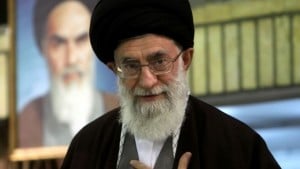
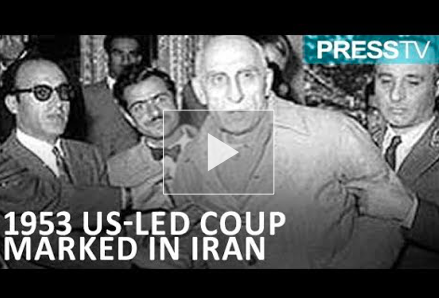






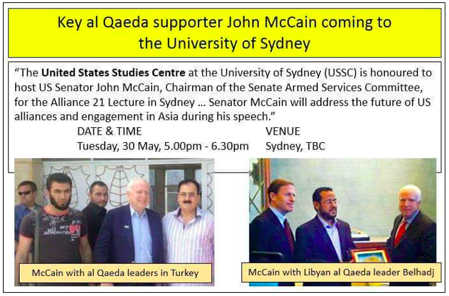
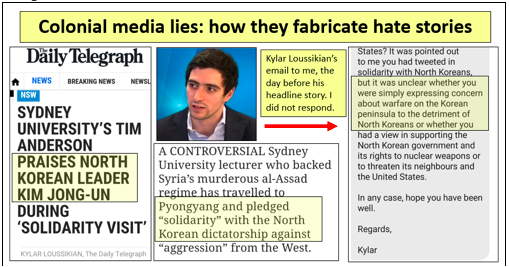
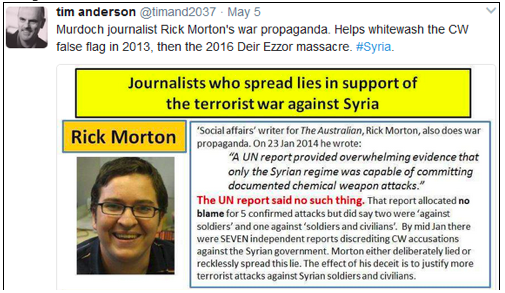
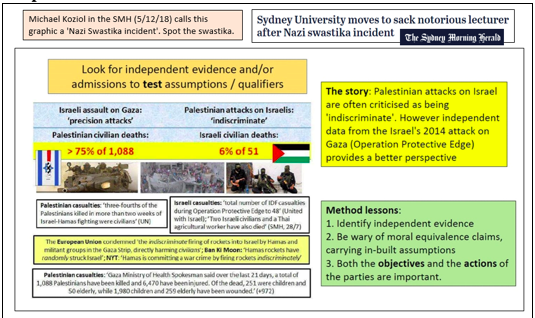
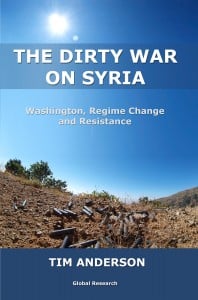


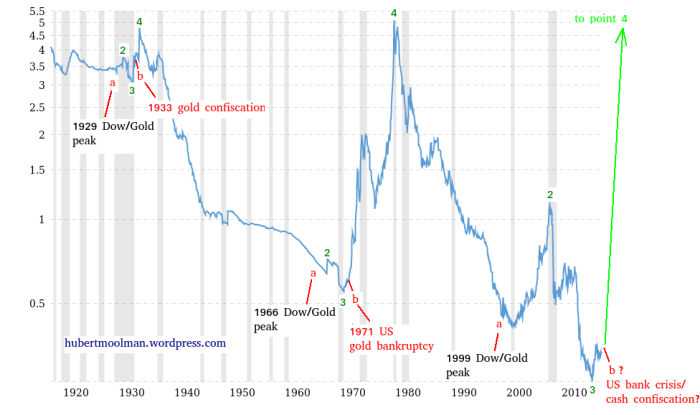

.jpg)


